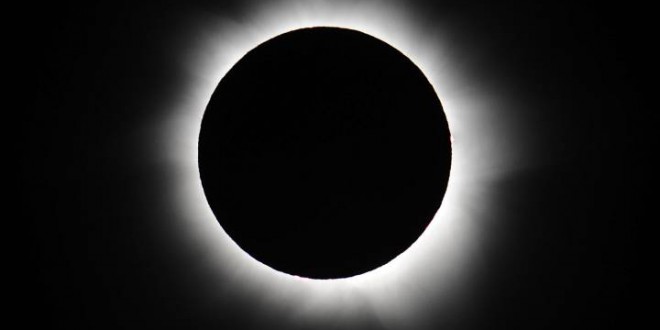The total solar eclipse is supposed to occur between Tuesday, March 8 and Wednesday March 9.
2014 was a great eclipse year for Canada. From coast to coast, we were able to enjoy a partial solar eclipse and a total of four lunar eclipses. This year, unfortunately, we won’t be in such a great position. However, that doesn’t mean you’ll miss out.
On March 9 there will be a total solar eclipse across parts of Indonesia and the South Pacific. The point of greatest eclipse will be in the middle of the Pacific Ocean, but several places in the Indonesian islands will have a fantastic view.
An eclipse of the Sun occurs when the Moon passes between the Earth and the Sun. The Moon blocks the light of the Sun and a shadow of the Moon is cast on the Earth’s surface.
During a solar eclipse, the Moon actually casts two shadows towards Earth. One shadow is called the umbra which becomes smaller as it reaches the Earth. The second shadow is called the penumbra which becomes larger as it reaches the Earth.
A total solar eclipse, or a complete blocking out of the Sun’s light, can only be seen from the area on the Earth’s surface that enters the Moon’s umbra, the smaller shadow. People viewing the eclipse from the area of the Earth’s surface that enters the penumbra, the larger shadow, will see only a partial blocking of the Sun.
A total solar eclipse can only occur when two events happen at the same time. The first event is a new Moon. This phase of the Moon occurs when the Sun is almost directly behind the Moon, and we see only a sliver of the Sun’s light reflected by the Moon. During this time the Moon and the Sun appear close together. The second event that must occur is that the Moon must be in the right position, directly in the line of sight between the Earth and the Sun. These two events occur at the same time about once every year and a half.
In a solar eclipse, the Moon moves between the earth and the Sun. When this happens, part of the Sun’s light is blocked. The sky slowly gets dark as the Moon moves in front of the Sun. When the Moon and Sun are in a perfect line, it is called a total eclipse. These are very rare. Most people only see one in their lifetime.
Agencies/Canadajournal
 Canada Journal – News of the World Articles and videos to bring you the biggest Canadian news stories from across the country every day
Canada Journal – News of the World Articles and videos to bring you the biggest Canadian news stories from across the country every day



